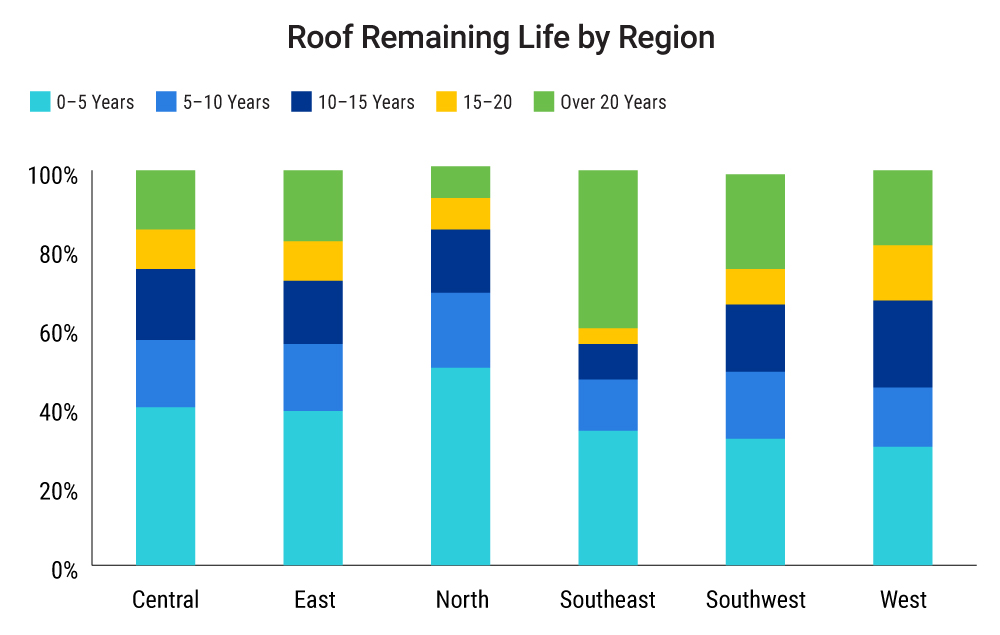Florida’s changing statutory environment surrounding insurance coverage for roofs may demand more robust data to clarify the risk amid increasing complexity. Bills SB 2D1 and SB 4D2, signed by Governor Ron DeSantis on May 26, enacted rules concerning issuing and renewing homeowners’ policies and attorneys’ fees related to such claims.
Verisk’s data can help insurers address this unique market more precisely with key roof data such as age, condition, shape, and material. Verisk used this data to analyze the Florida market in a new study.
Analyzing critical roof attributes
Data shows that roof age and condition tend to correlate, with newer roofs having better condition scores than older ones. But there are significant exceptions; newer roofs account for the highest percentage of severe roof conditions in Florida.
Florida overall has a significantly higher percentage of roofs in critical or severe condition—21.6% versus 1.4% nationally. Higher exposure to extremes of heat, humidity, tropical cyclones, and UV rays tend to shorten roofs’ lifespans in Florida, where 36.8% of homes have 5 or less years of remaining useful roof life.
Drivers of resiliency
Certain roof materials and shapes contribute to resiliency in the Florida market. Shingles are most common, but builders install metal and tile roofs more frequently than in other states. Hip roofs are more common in Florida than they are nationwide, and this shape tends to perform better in hurricane and tropical storm conditions. Solar panels have seen wide adoption in Florida’s sunny climate, but can present additional risk of fire and other hazards.
Take a fresh look at your Florida portfolio and prepare for what’s next. Explore Verisk’s solutions for the Florida market and read our latest case study.
Sinthy Khamsaeng is underwriting product manager for personal lines at Verisk. You can reach her at sinthy.khamsaeng@verisk.com.





















 That Insurance Talent Crisis? It’s a Global Knowledge Opportunity
That Insurance Talent Crisis? It’s a Global Knowledge Opportunity  Viewpoint: You’re at a Competitive Disadvantage If You’re Not Innovating
Viewpoint: You’re at a Competitive Disadvantage If You’re Not Innovating  Florida Gets 8 New P/C Carriers After Insurance Market Reforms
Florida Gets 8 New P/C Carriers After Insurance Market Reforms  Travelers: Distracted Driving Incidents Continue to Rise
Travelers: Distracted Driving Incidents Continue to Rise 



